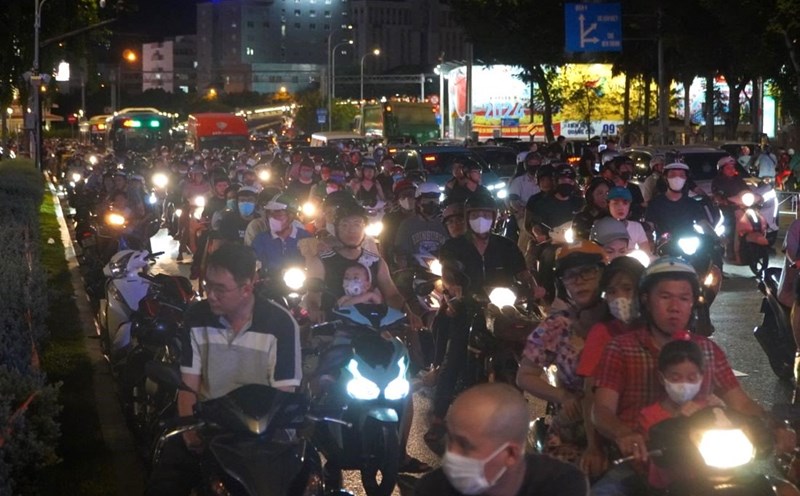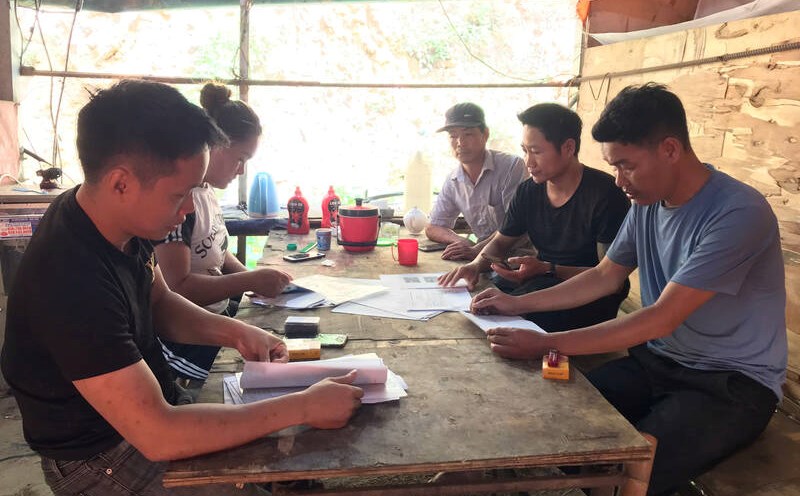Terminal T3 - Modern project, technological pioneer
Ho Chi Minh City has just witnessed a series of large-scale urban - transport infrastructure events being started, inaugurated and put into operation, marking a strong transformation on the city's development journey.
Notably, Tan Son Nhat T3 Terminal is the largest domestic terminal in Vietnam, with a capacity to serve 20 million passengers per year, bringing the total capacity of Tan Son Nhat Airport to 50 million passengers/year. The project has a total investment of nearly VND 11,000 billion, invested by Vietnam Airports Corporation (ACV).
Not only bringing a spacious and modern appearance, Terminal T3 is also a pioneer in applying electronic identification technology and biometrics in air procedures. Passengers can use a chip-embedded citizen ID card or VNeID identification to complete flight procedures themselves, from check-in, baggage check-in to the security gate and get on the plane.
The Vinhomes Green Paradise project with a scale of 2,870 hectares that has just started construction is considered one of the top-class coastal urban projects in the region, not only creating a modern, ecological living space but also opening up new momentum for economic development in the southern area of Ho Chi Minh City.
According to Dr. Tran Quang Thang - Director of the Ho Chi Minh City Institute of Economics and Management, the project will create a foundation to form a multi-industry economic ecosystem, attracting high-quality human resources and modern technology. In particular, the project also contributes to improving the quality of life of local people, promoting the shift of the economic structure of Can Gio district towards urban - service - logistics.
Infrastructure connecting to Can Gio is also being invested in, with many strategic projects such as the metro line from District 7 to Can Gio, the intersection of Ben Luc - Long Thanh expressway with Rung Sac road, the coastal route connecting Tien Giang - Can Gio - Dong Nai - Ba Ria - Vung Tau. When traffic is synchronized, service access and regional connectivity will be significantly improved.
Mr. Thang emphasized: "In the long term, Can Gio Coastal Tourism Urban Area not only promotes local development but is also a part of Ho Chi Minh City's multipolar development strategy. Together with Can Gio international transit port, this will create a new logistics value chain, becoming an export gateway for the entire Southeast region, while reducing the load on ports such as Cat Lai and Hiep Phuoc".
Ben Luc - Long Thanh Expressway connects the East - Southwest
Also on this occasion, Ho Chi Minh City has opened nearly 20km of the Ben Luc - Long Thanh Expressway, from National Highway 1 to Nguyen Van Tao Street.
Previously, about 11km at the beginning and end of the route had been put into use. Thus, the total length exploited has reached nearly 30km out of a total of nearly 58km of the entire route.
The opening of this expressway section helps reduce traffic pressure for the western gateway of Ho Chi Minh City, while strengthening the connection of the Western provinces with Hiep Phuoc port area, creating favorable conditions for logistics and inter-regional cargo transportation activities.
According to Mr. Pham Hong Quang - General Director of Vietnam Expressway Corporation (VEC), the remaining two "bottlenecks" are Binh Khanh Bridge and Phuoc Khanh Bridge that are being focused on handling. Binh Khanh Bridge is expected to open to traffic at the end of September this year, while Phuoc Khanh Bridge will be re-bidding after the Japanese contractor terminates the contract, with the goal of completion in mid-2026.
When the entire route is put into operation, the Ben Luc - Long Thanh Expressway will become a strategic transportation corridor, connecting the Southeast with the Southwest quickly and effectively.











